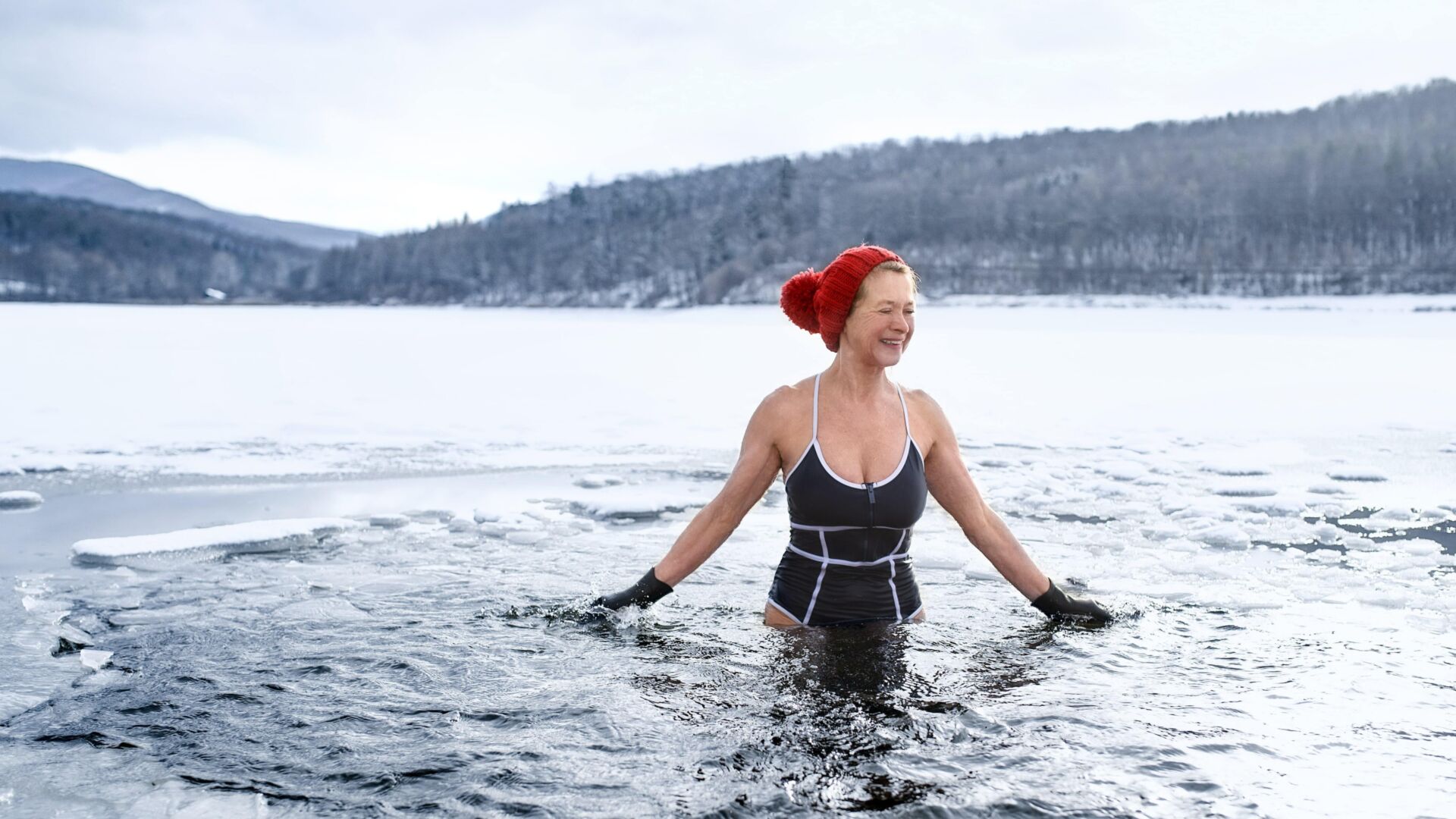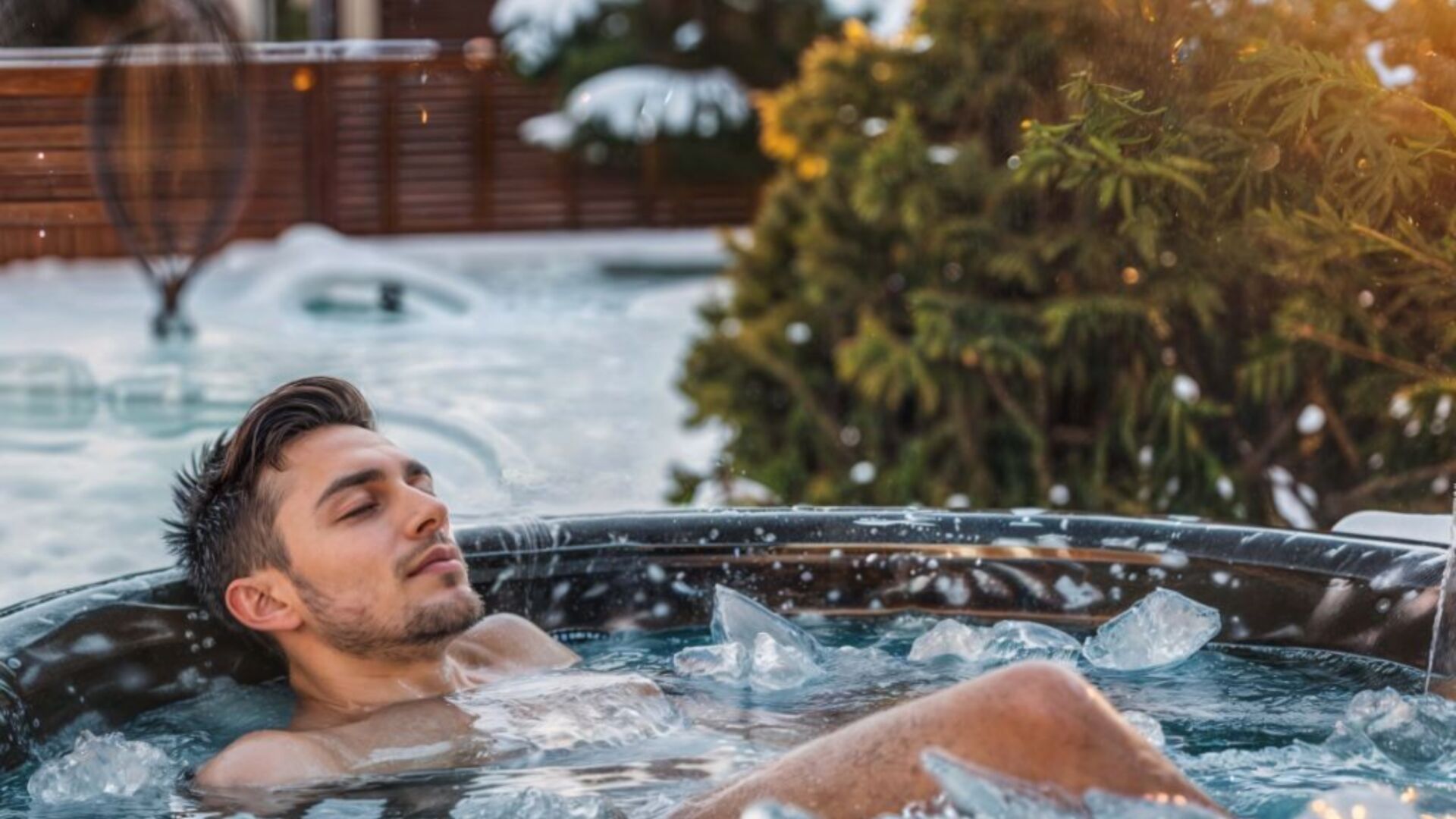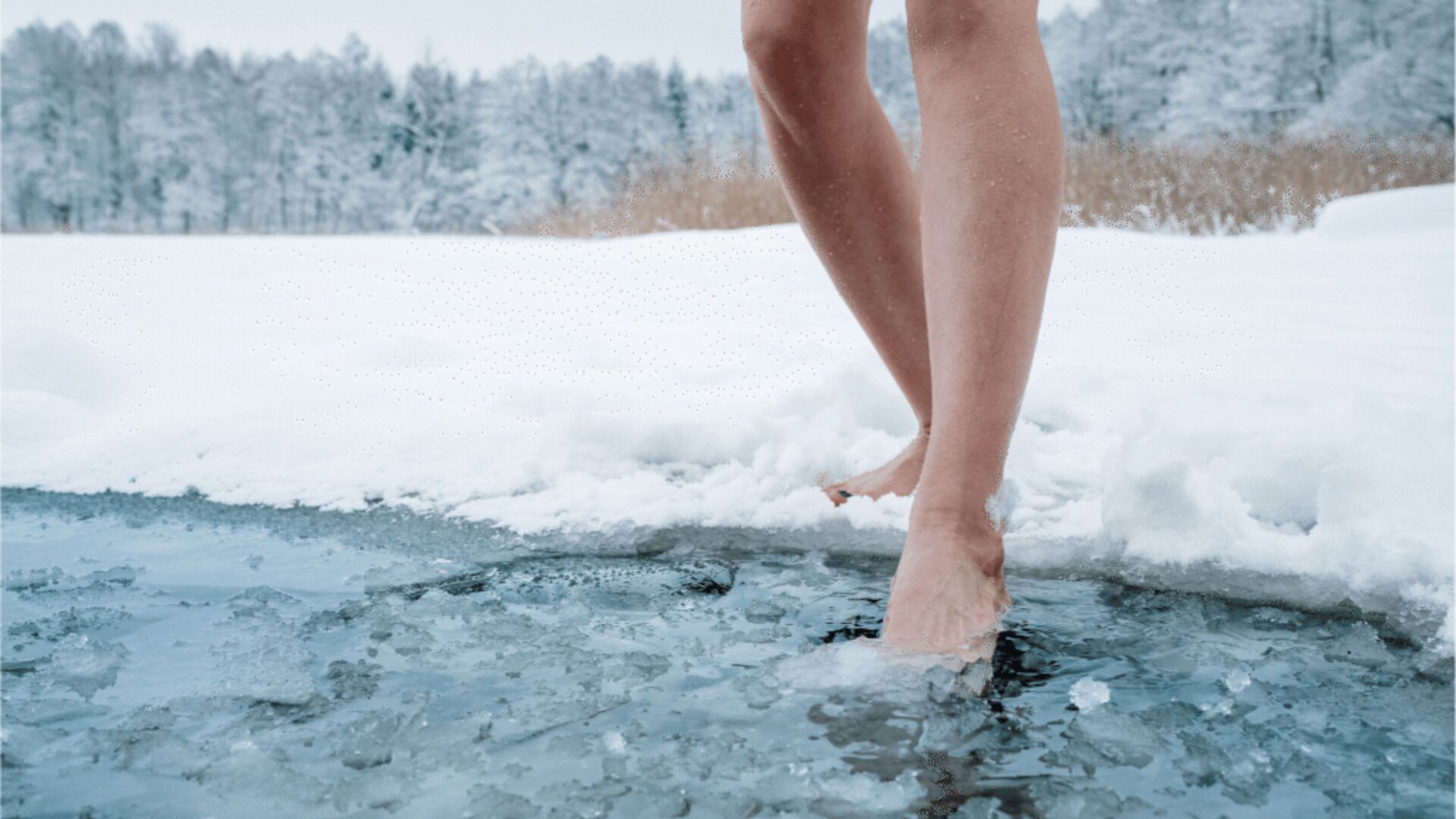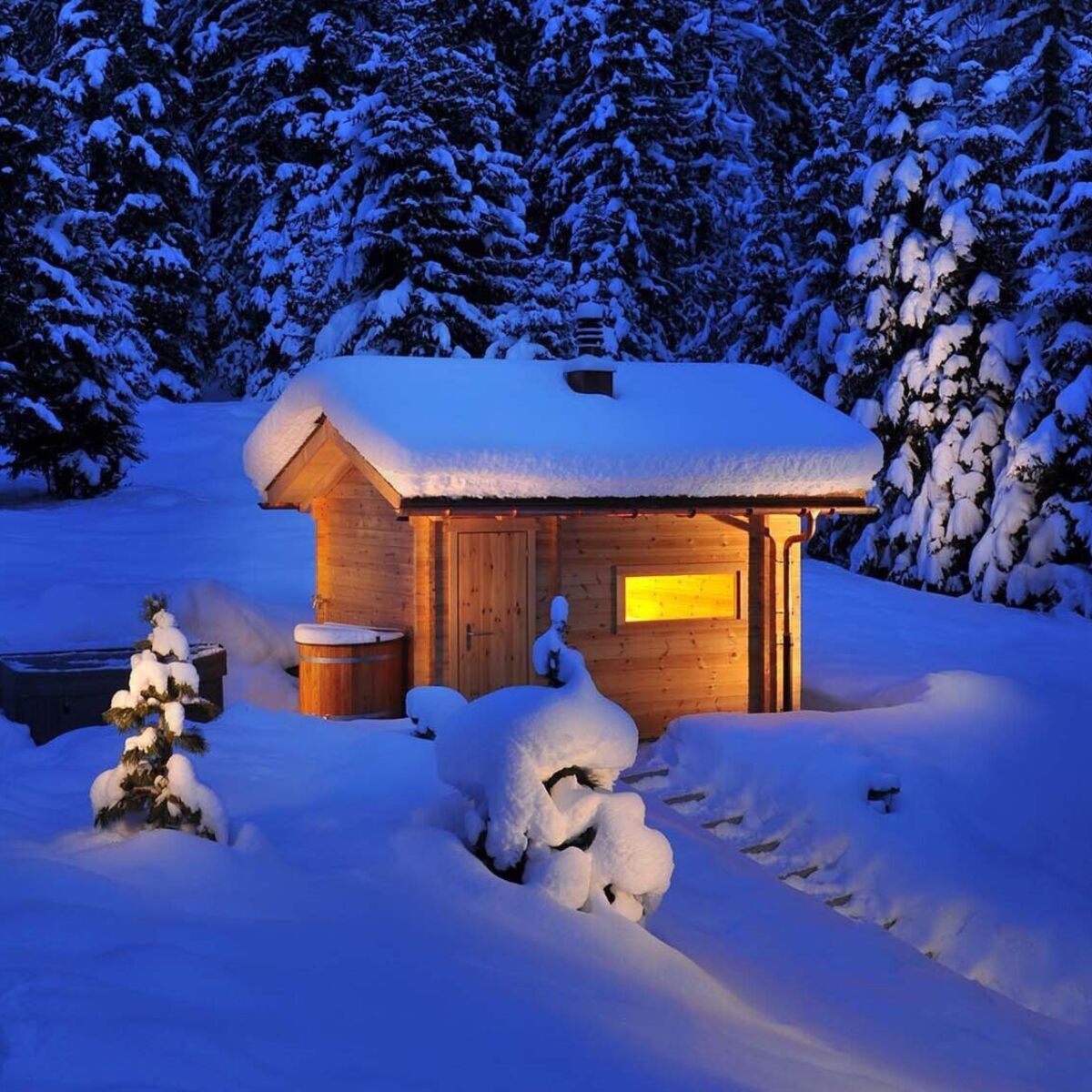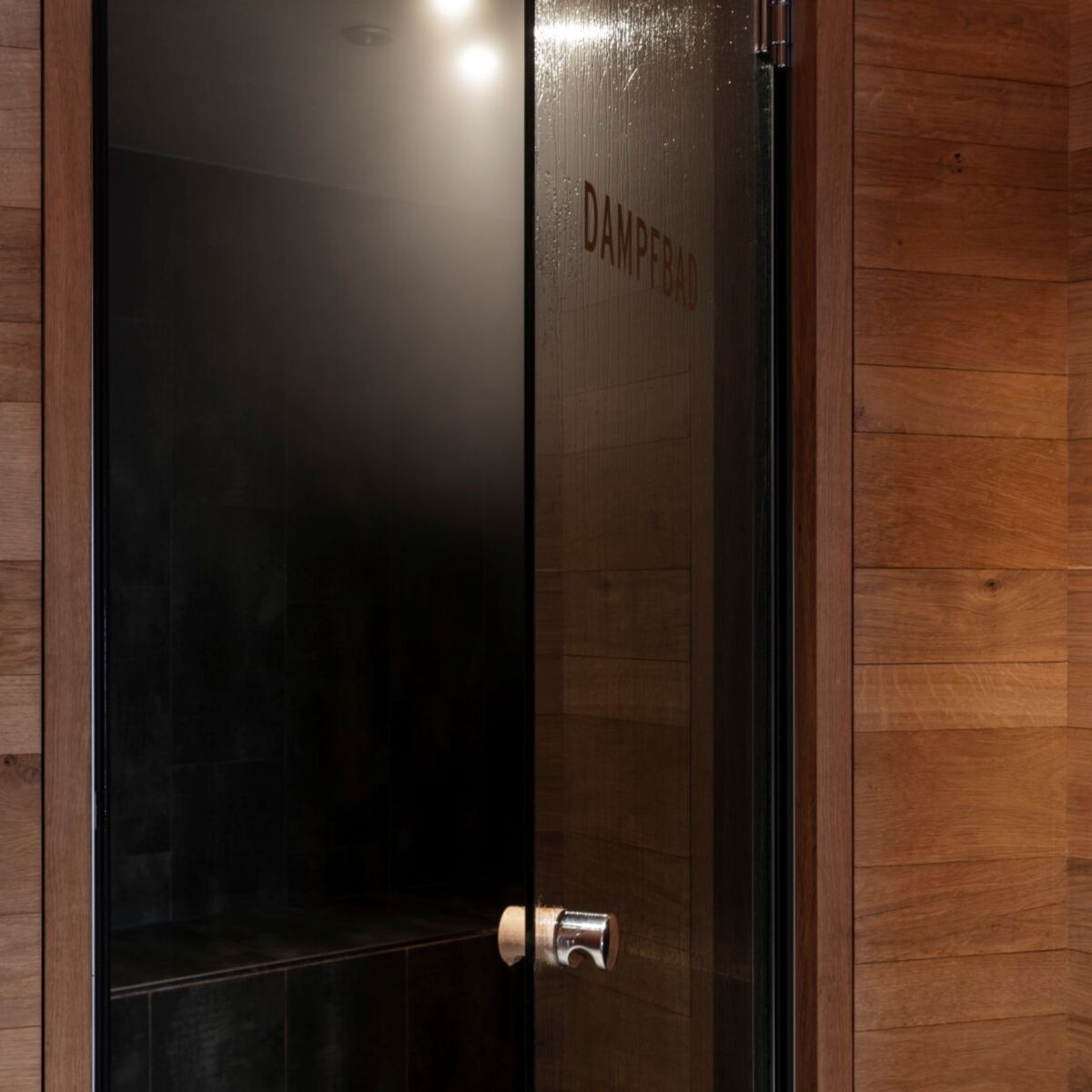Ice bathing: A fresh kick for your well-being
Ice swimming has long been more than just a trend - it has become an integral part of many wellness routines. Whether in Switzerland, Germany or Scandinavia, winter swimming (or ice swimming) offers a refreshing yet challenging way to boost wellbeing. In this blog post, we delve into the deep, clear waters of ice swimming and explore its benefits, methods and how to best prepare for it.
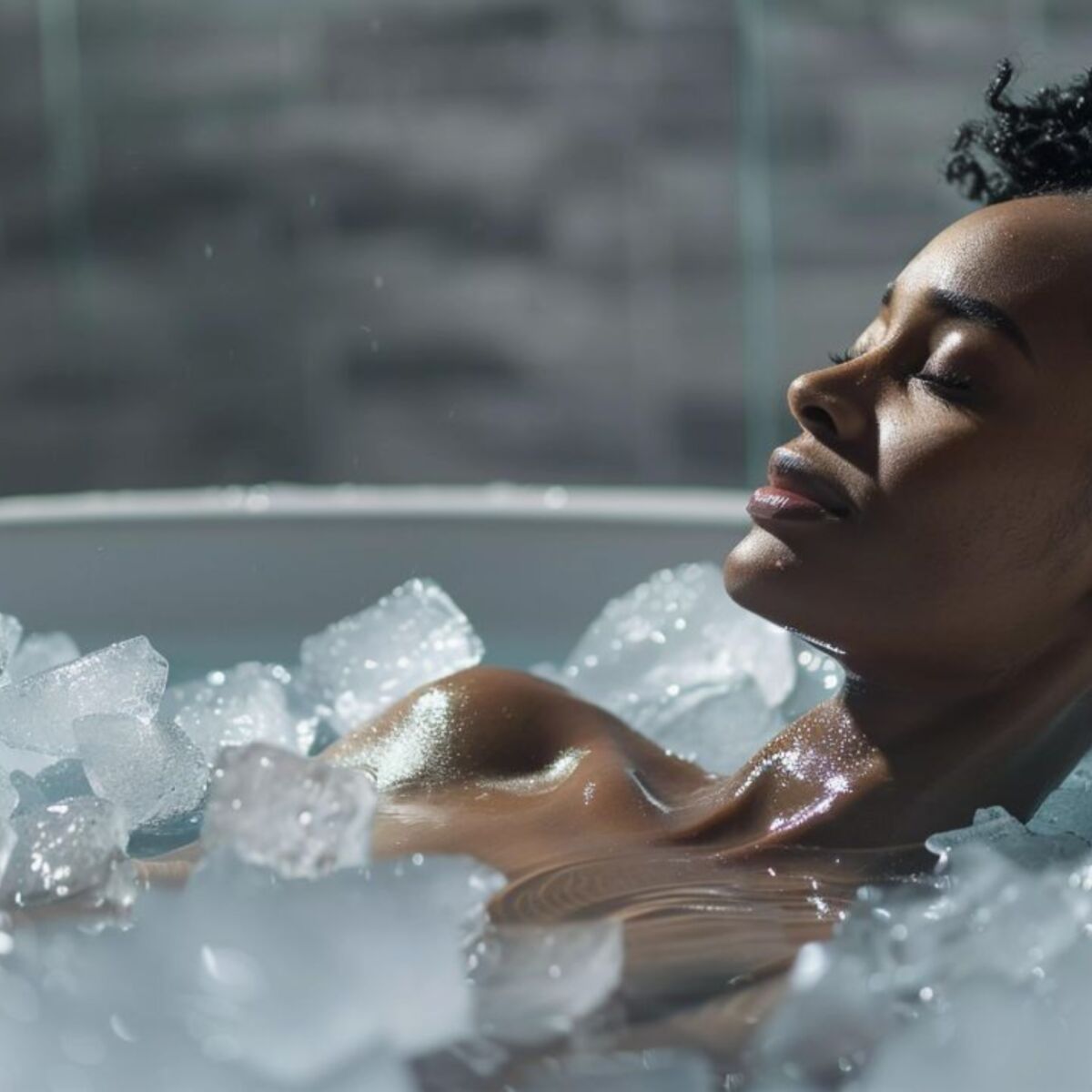
- This is why ice swimming is on trend
- The Wim Hof method: Is ice bathing healthy?
- Pure refreshment: positive effects of the ice bath after the sauna
- How you can prepare for ice bathing
- Ice bathing instructions step by step
- Not just winter bathing: with the IceTub you can also cool off at home
- Conclusion
- FAQ
This is why ice swimming is on trend
Ice swimming has become enormously popular in recent years. More and more people swear by the positive effects of a short dip in cold water. But why is that? One reason is certainly the increasing attention the topic is receiving in the media. Famous ice swimmers such as Wim Hof have popularised ice swimming and show in impressive videos how you can stay healthy and vital despite the extreme cold.
Studies have shown that ice swimming can strengthen the immune system, stimulate circulation and promote mental health. Swimming in a cold environment causes the body to release endorphins - happiness hormones that make you feel positive.
"When I dive into the cold water, I immediately feel my body wake up. The cold penetrates my skin and gets my blood pumping. My heart beats faster, my breathing deepens and I feel alive. The intensity of the experience is indescribable."
Pure refreshment: positive effects of the ice bath after the sauna
The combination of sauna and ice bath is particularly popular in the wellness world. After an extensive sauna session in tropical temperatures, the ice bath is like a refreshing shock for the body. The rapid cooling stimulates blood circulation and strengthens the immune system. In addition, the alternation between hot and cold provides particularly deep relaxation and helps to relieve muscle tension.
The body is stimulated by the changing temperatures to regenerate more quickly. This practice, which is often observed in Nordic countries, is also becoming increasingly popular in Switzerland. Ice swimmers report a clear head and an increased sense of well-being after the ice bath.
How you can prepare for ice bathing
Bathing in ice-cold water requires a certain amount of preparation in order to slowly acclimatise the body to the cold and minimise health risks. Here are some tips on how you can best prepare for your first ice bath:

- Start slowly: Start with cold showers and gradually increase the duration and intensity. This will allow your body to slowly acclimatise to the cold.
- Health check: Have yourself checked by a doctor beforehand, especially if you have heart problems or other health concerns.
- Mental preparation: Use meditation and breathing exercises to prepare yourself mentally for the cold. The Wim Hof method can be particularly helpful here.
- Proper clothing: Wear bathing shoes and gloves to protect your extremities from the cold. Many people also wear a warm hat when ice swimming, as you lose a lot of heat through your head.
- Accompaniment: Never go into cold water alone. A companion can help immediately in an emergency.
Ice bathing instructions step by step
We have put together a step-by-step guide for anyone who wants to try their hand at ice swimming:
- Choose a location: look for a safe place to go ice swimming, such as a lake or river that doesn't have strong currents. In summer, an ice tub or cold tub can be a practical alternative that you can set up in your garden at home.
- Warm up: Warm up well before ice bathing, e.g. with light exercise.
- Enter the water slowly: Enter the cold water slowly and breathe calmly. Do not submerge your head, but gradually acclimatise your body to the cold.
- Short duration: Only stay in the water for a few seconds to a minute at the beginning. Only increase the duration gradually. Experts advise: The duration in minutes should correspond to the temperature, i.e. at 4 degrees Celsius, stay in the ice bath for a maximum of 4 minutes.
- Warming up afterwards: Put on warm clothes immediately after the ice bath and drink hot tea to warm your body up again.
Not just winter bathing: with the IceTub you can also cool off at home
If you don't have access to a nearby lake or river for winter swimming, there is a practical alternative: the IceTub. With this special container, you can also bathe in ice in the comfort of your own home. Simply fill the IceTub with cold water and ice cubes and enjoy the beneficial effects of the cold in your own bathroom. The ice bath effect can also be achieved in summer.
The IceTub allows you to enjoy the benefits of ice bathing all year round without having to rely on the low temperatures in winter. The same applies here: start slowly and gradually acclimatise your body to the cold.
Conclusion
Winter swimming is much more than just cold fun. It offers numerous health benefits and can increase your well-being in the long term. Whether you opt for traditional ice swimming in the lake, the IceTub at home or the combination of sauna and ice bath - there have already been various studies that have been able to derive positive effects from ice swimming. This is also confirmed by many passionate ice swimmers.
As experts in wellness and sauna construction in Switzerland, Küng Wellness is your trusted partner for the realisation of private wellness dreams. Would you like to learn more about ice bathing, biohacking or wellness in general? Then take a look at our magazine on a regular basis.
FAQ
Combien de temps faut-il prendre un bain froid ?
The recommended duration is 2 to 15 minutes, depending on your experience with cold, your physical condition, and the purpose of the application. Beginners should start with short intervals and increase gradually.
What are the health benefits of an ice bath?
An ice bath offers a variety of health benefits: It reduces inflammation, supports muscle recovery after sport and strengthens the immune system. It also promotes blood circulation, activates the metabolism and can improve the quality of sleep. Mental strength is also trained through regular cold stimuli - consciously dealing with the cold strengthens your own resilience and self-control.
In addition, an ice bath contributes to general well-being, increases resistance to cold and has an antioxidant effect by reducing oxidative stress in the body.
Important: Staying too long or in water that is too cold can lead to circulatory problems, hypothermia or frostbite. People with pre-existing medical conditions should seek medical advice beforehand.
Who are ice baths particularly suitable for?
Ice baths are ideal for athletes, biohackers, fitness enthusiasts and anyone who wants to boost their physical and mental health. People with chronic fatigue, high stress levels or a weakened immune system also benefit from cold therapy.
Ice baths are particularly effective for sore muscles, micro-injuries or after intensive training sessions - they inhibit inflammation and alleviate the perception of pain. This accelerates regeneration and promotes long-term performance.
People with chronic pain conditions or inflammatory diseases such as rheumatism or fibromyalgia can also benefit from regular, controlled cold applications - always in consultation with medical specialists.
When is the best time for an ice bath - before or after training?
An ice bath after training is ideal for regeneration: it reduces muscle soreness, inhibits inflammation, promotes blood circulation and speeds up recovery. It has a particularly relaxing and regeneration-promoting effect after intensive sessions or competitions.
A short ice bath (approx. 1-2 minutes) before training can have an activating effect: it promotes mental focus, stimulates the metabolism, activates the cardiovascular system and increases muscle tension - ideal before a competition or if you are mentally tired.
Important: If you want to build muscle mass (hypertrophy), you should refrain from taking an ice bath immediately after strength training, as it can inhibit muscle growth in the short term. An interval of several hours or abstinence on these days is recommended.
How do you get used to the cold in an ice bath?
The body can adapt through regular, brief exposure to cold. Start with 30-60 seconds at 10-15 °C and increase gradually. Cold showers are good preparation. Important: Breathe calmly, do not tense up. Tip: Keep your hands and arms above the water to start with - this makes it easier to get started, as hands are particularly sensitive to cold. Over time, you can increase the depth of immersion.
